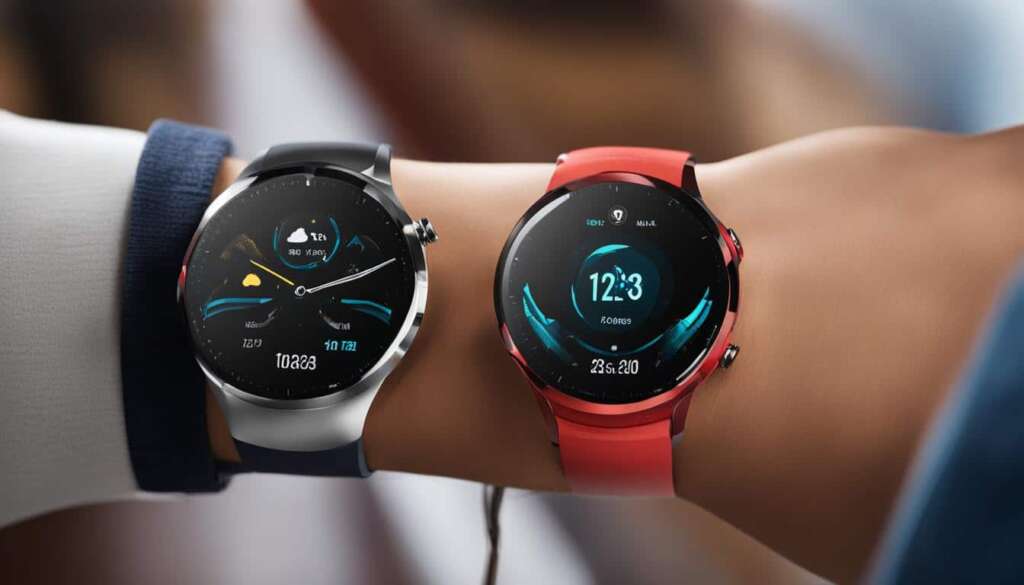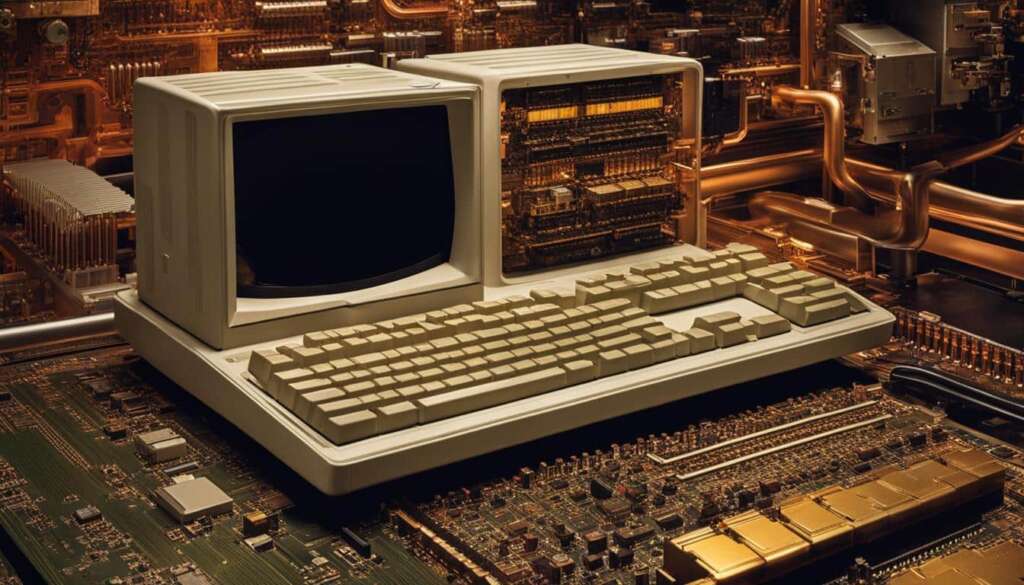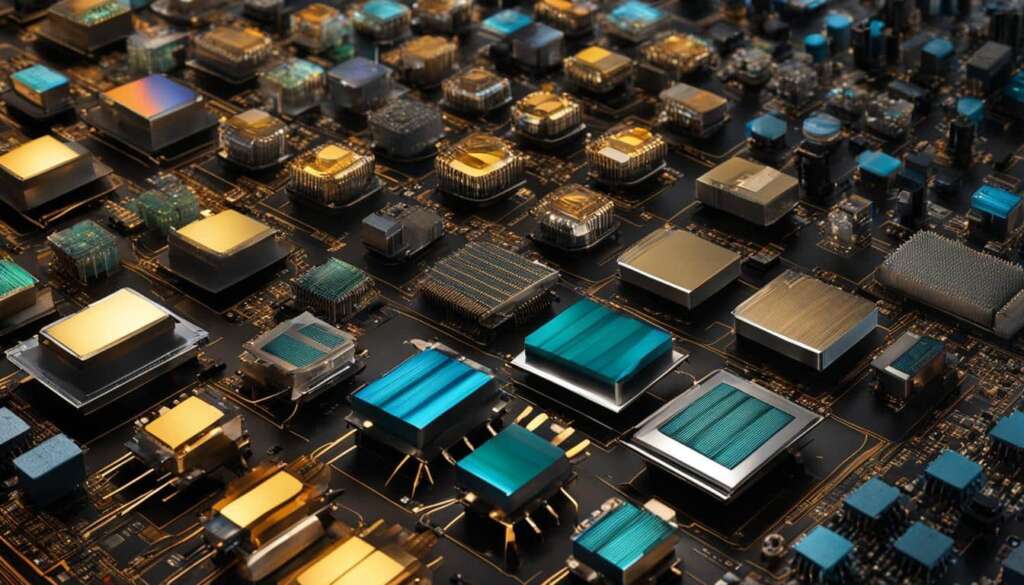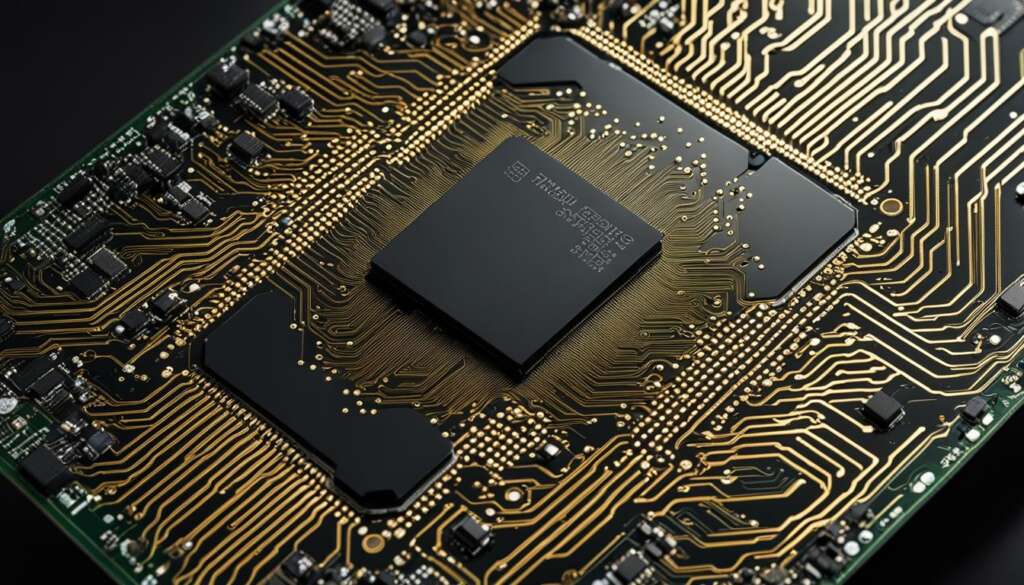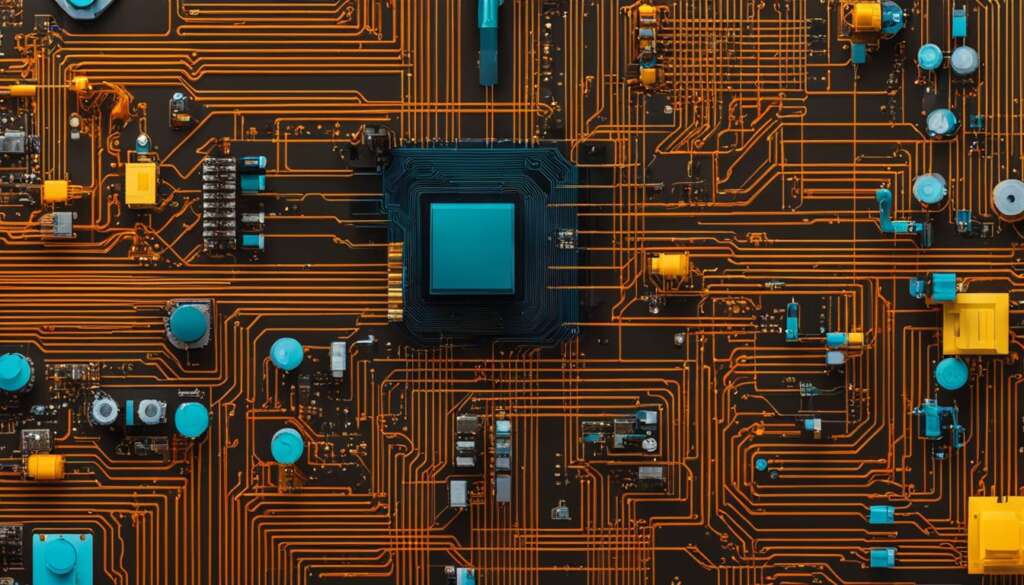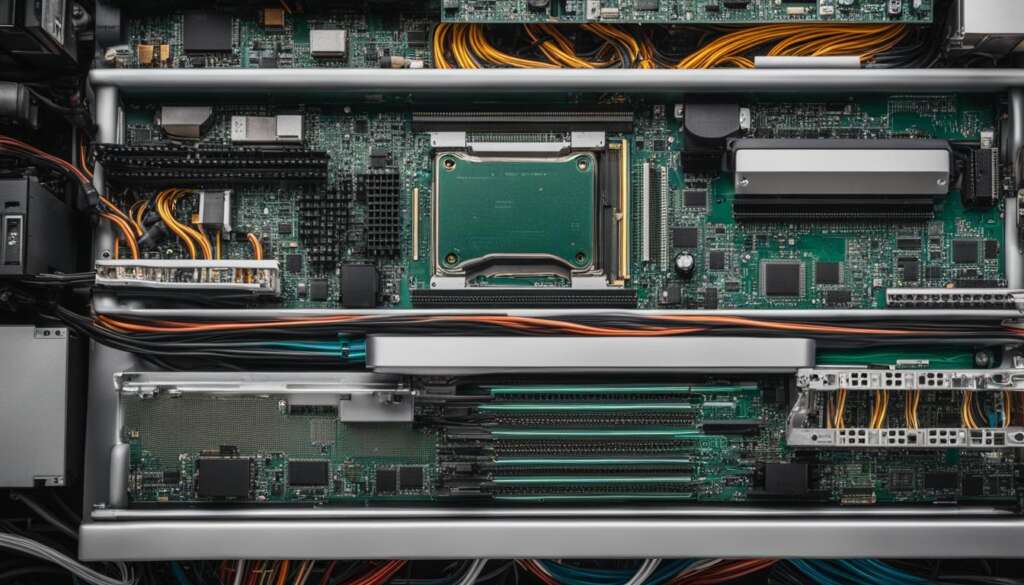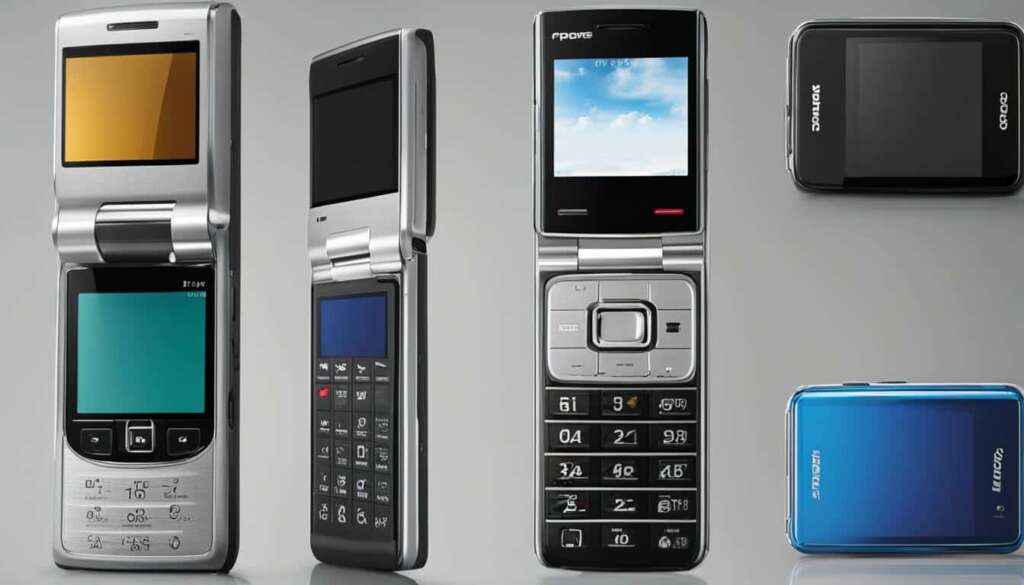Table of Contents
Wearable technology has come a long way since the introduction of the first pioneering devices in the 1980s. The evolution of wearable computing has been marked by continuous innovation and advancements in various components, including processors for wearable devices. Today, wearable device processors play a crucial role in powering the functionality and capabilities of wearable technology chips.
From bulky backpack-mounted computers to sleek and powerful smartwatches, wearable technology has transformed the way we interact with technology. As processors for wearable devices become more advanced and efficient, wearable devices are becoming more powerful, compact, and feature-rich. These processors enable wearable devices to deliver advanced features such as displays, battery life optimization, and efficient input/output systems.
The future of wearable device processors holds immense potential. With continuous advancements in technology and increasing demand for wearable technology, these processors will continue to evolve and shape the future of wearable computing. As the Internet of Things (IoT) and artificial intelligence (AI) play a significant role in wearable technology, we can expect further innovations such as e-skin patches for health monitoring and AI-powered hearables.
Stay tuned to explore the fascinating history and exciting future of wearable device processors, as we delve into the evolution of wearable computing, the rise of smartwatches, applications of wearable technology, challenges and opportunities, the societal impact, and ethical considerations in this transformative field.
The Evolution of Wearable Computing
Wearable computing has a rich and varied history, with significant advancements in the development of wearable devices. Over the decades, the definition of wearable computers has evolved, leading to the creation of more innovative and sophisticated technologies. The journey began in the 1980s with the introduction of groundbreaking devices such as backpack-mounted multimedia computers and toe-operated computers.
In the 1990s, wearable computing took a major leap forward with the introduction of the first smartwatches and head-mounted displays. These devices represented a significant shift in the industry and laid the foundation for future developments. The 2000s saw the emergence of the Tinmith wearable computer and other notable systems, further pushing the boundaries of what wearable technology could achieve.
The 2010s witnessed a renewed interest in wearable computing, driven by the introduction of smartwatches and revolutionary products like Google Glass. These advancements propelled wearable technology into the mainstream, with consumers embracing the convenience and functionality these devices offered. The history of wearable computing is characterized by a constant stream of technological breakthroughs and an ever-expanding range of applications.
| Decade | Milestones |
|---|---|
| 1980s | Introduction of backpack-mounted multimedia computers and toe-operated computers. |
| 1990s | Introduction of the first smartwatches and head-mounted displays. |
| 2000s | Emergence of the Tinmith wearable computer and other notable systems. |
| 2010s | Renewed interest in wearable computing with the introduction of smartwatches and Google Glass. |
The Rise of Smartwatches
Smartwatches have emerged as one of the most popular categories in the field of wearable technology. Combining the functionality of a traditional watch with advanced features and connectivity, smartwatches have revolutionized the way we interact with our devices. These wrist-worn devices have become synonymous with convenience, style, and enhanced personalization.
Over the years, smartwatches have undergone significant advancements in design, functionality, and user experience. The introduction of touchscreens, wireless connectivity, and app integration has transformed these devices into powerful companions that seamlessly integrate into our daily lives. From tracking fitness activities to receiving notifications and accessing various apps, smartwatches offer a range of features that make them indispensable.
One of the key players in the smartwatch market is Apple with its Apple Watch series. Featuring sleek designs, robust health tracking capabilities, and seamless integration with other Apple devices, the Apple Watch has become a symbol of innovation and style. Other major manufacturers such as Samsung and Garmin have also made significant contributions to the smartwatch industry, offering a diverse range of options to cater to different needs and preferences.
| Benefits of Smartwatches | Challenges of Smartwatches |
|---|---|
|
|
Smartwatches have become an integral part of our digital lifestyle, providing us with quick access to important information and keeping us connected without the need to constantly check our smartphones. They have transformed the way we manage our health and stay fit by offering comprehensive fitness tracking features. Additionally, the ability to customize watch faces and install a variety of apps makes smartwatches a versatile and personalized accessory. It’s no wonder why smartwatches have gained such popularity and continue to evolve to meet the demands of a fast-paced, connected world.
Applications of Wearable Technology
Wearable technology has revolutionized various industries, offering innovative solutions to everyday challenges. Let’s explore some of the key applications of wearable technology:
Wearable Devices in Healthcare
The healthcare industry has seen significant advancements with the integration of wearable devices. Wearable technology enables health and fitness tracking, allowing individuals to monitor vital signs, sleep patterns, and physical activities. These devices have become invaluable tools in chronic disease management and remote patient monitoring, providing doctors with real-time data and patients with improved access to healthcare.
Table: Examples of Wearable Devices in Healthcare
| Device | Application |
|---|---|
| Smartwatches | Health and fitness tracking, heart rate monitoring |
| Smart clothing | Sensor-embedded clothing for posture correction and injury prevention |
| E-skin patches | Continuous health monitoring, early detection of diseases |
Fitness Tracking
Wearable technology has transformed the way we approach fitness and exercise. Fitness trackers, such as smartwatches and activity bands, provide real-time data on steps taken, calories burned, and heart rate. These devices motivate individuals to stay active and help them set and achieve their fitness goals. Fitness tracking has become a popular trend among health-conscious individuals, providing insights into their overall well-being and promoting a healthier lifestyle.
Smart Clothing
Smart clothing integrates sensors and technology into everyday garments, offering a range of functionalities. From temperature regulation to posture correction, smart clothing enhances comfort and performance. Athletes and fitness enthusiasts can benefit from clothing that measures biometrics, tracks movement, and provides feedback to optimize performance. Companies like Hexoskin and Athos have pioneered the development of smart clothing, pushing the boundaries of wearable technology.
Wearable technology continues to advance and expand into new areas, offering endless possibilities. With ongoing research and innovation, we can expect even more exciting applications in the future.
The Future of Wearable Device Processors
Wearable technology has come a long way over the years, and wearable device processors have played a crucial role in driving its advancements. As we look to the future, the possibilities for wearable computing are endless, with continuous innovations and improvements on the horizon.
The future of wearable device processors holds great promise, with advancements in technology and increasing demand driving innovation in the field. As components such as processors, batteries, and displays become more advanced and affordable, wearable devices will become even more powerful and capable. This will enable them to handle more complex tasks, provide faster response times, and support advanced features that were previously unimaginable.
The future of wearable technology is not only about enhanced functionality but also about the integration of cutting-edge technologies such as the Internet of Things (IoT) and artificial intelligence (AI). These technologies will enable wearable devices to seamlessly connect with other smart devices, analyze vast amounts of data, and provide personalized insights and recommendations.
Looking ahead, we can expect to see innovative applications of wearable technology that go beyond the current scope. For example, e-skin patches that monitor health conditions in real-time, AI-powered hearables that provide personalized audio experiences, and smart clothing embedded with technology for various purposes. These advancements will revolutionize industries such as healthcare, sports, entertainment, and fashion, creating new opportunities for businesses and individuals.
| Advancements in Wearable Device Processors | Benefits |
|---|---|
| More powerful and efficient processors | Improved performance and faster response times |
| Integration with IoT and AI | Seamless connectivity and personalized insights |
| Enhanced features and capabilities | Support for complex tasks and advanced applications |
| Integration with smart devices | Seamless communication and synchronization |
In conclusion, the future of wearable device processors holds great potential for groundbreaking innovations in wearable technology. As advancements continue to be made, we can look forward to more powerful, efficient, and capable wearable devices that enhance our lives and revolutionize the way we interact with technology.
Challenges and Opportunities in Wearable Technology
Wearable technology has brought about numerous advancements, but it is not without its challenges. From battery limitations to data security concerns, wearable devices face several obstacles in their development and adoption. These challenges, however, also present opportunities for innovation and improvement in the field of wearable technology.
Wearable Technology Challenges
- Battery Life: One of the primary challenges in wearable technology is ensuring sufficient battery life. Due to their compact size, wearable devices often have limited space for batteries, resulting in shorter usage times. Improving battery technology and efficiency is crucial for enhancing the user experience and increasing the practicality of wearable devices.
- Data Privacy: Wearable devices collect a wealth of personal information, including biometric data and user behavior. Ensuring privacy and data security is of utmost importance to protect user information. Companies must establish robust data protection measures and comply with privacy regulations to build trust with consumers.
- User Experience: Comfort and user experience are vital factors in the adoption of wearable devices. Wearable technology should be lightweight, comfortable to wear, and seamlessly integrate into everyday life. Overcoming design challenges and creating intuitive interfaces are key to improving the overall user experience.
Future Opportunities in Wearables
Despite these challenges, the future of wearable technology is bright, offering numerous opportunities for growth and innovation:
- Medical Applications: Wearable devices have the potential to revolutionize healthcare by providing real-time health monitoring, remote patient care, and early detection of diseases. The integration of wearables in healthcare systems can lead to improved patient outcomes and reduced healthcare costs.
- Smart Home Integration: Wearable technology can enhance the functionality of smart homes by seamlessly connecting and controlling various devices. Through wearable devices, users can effortlessly manage their home security, lighting, temperature, and entertainment systems.
- Enhanced Performance: Wearable technology can play a significant role in sports and fitness, providing athletes with real-time performance data and personalized training programs. Fitness enthusiasts can track their progress and receive feedback to optimize their workouts and achieve their goals.
As wearable technology continues to evolve, it presents a world of possibilities. Overcoming challenges in battery life, data privacy, and user experience will pave the way for further advancements. With the potential to transform healthcare, improve daily living, and enhance personal performance, wearable technology offers exciting opportunities for both businesses and individuals.
| Challenges | Opportunities |
|---|---|
| Battery Life | Medical Applications |
| Data Privacy | Smart Home Integration |
| User Experience | Enhanced Performance |
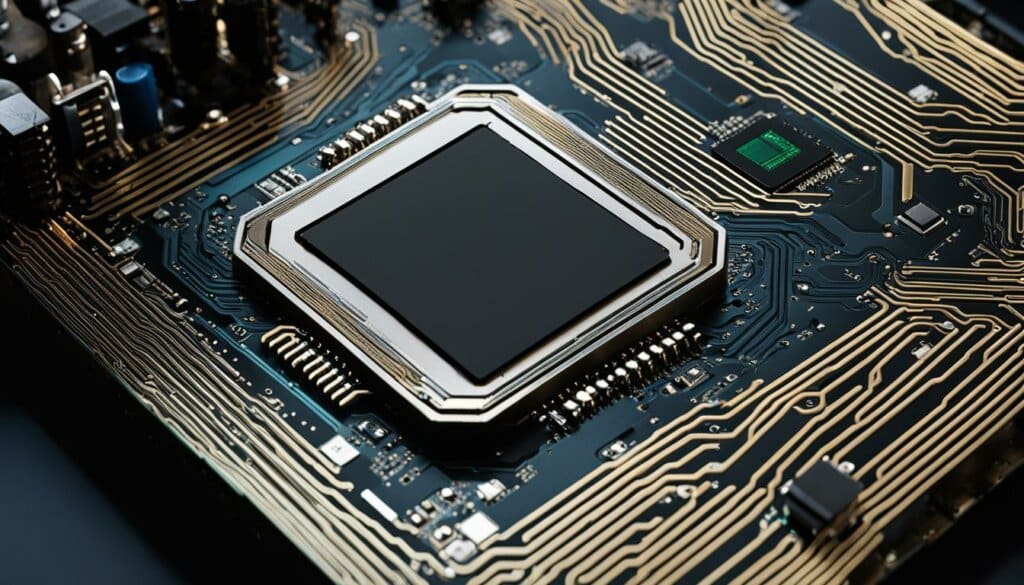
The Impact of Wearable Technology on Society
Wearable technology has revolutionized the way we live, integrating seamlessly into our daily lives and having a significant impact on society. These devices have become a part of our lifestyles, empowering us to track our fitness, stay connected, and access information on the go. The convenience and functionality that wearable devices offer have transformed the way we interact with technology and have become an integral part of our everyday routines.
Wearable technology has brought about a new level of accessibility, making technology more personal and user-friendly. From smartwatches that monitor our health and provide notifications, to fitness trackers that help us stay active and achieve our fitness goals, wearable devices have become essential companions in our journey towards a healthier and more connected lifestyle. They have also opened up new possibilities in various industries, such as healthcare, sports, and entertainment, enabling advancements in remote patient monitoring, sports performance analysis, and immersive experiences.
Wearable technology has seamlessly integrated into our lives, empowering us to track our fitness, stay connected, and access information on the go.
Wearable devices have also made technology more accessible to a wider range of individuals, including those with disabilities. The incorporation of assistive technologies into wearables has provided new opportunities for individuals with visual, auditory, or mobility impairments. From smart glasses that provide real-time visual assistance to hearing aids that are integrated into earphones, wearable technology has enhanced the quality of life for many people with disabilities.
The societal impact of wearable technology will continue to grow as technology advances and new applications are discovered. As these devices become more sophisticated and capable, they will further transform industries, improve healthcare outcomes, and enhance our overall quality of life. However, it is crucial to address ethical considerations such as data privacy and security to ensure the responsible use of wearable technology and protect user information.
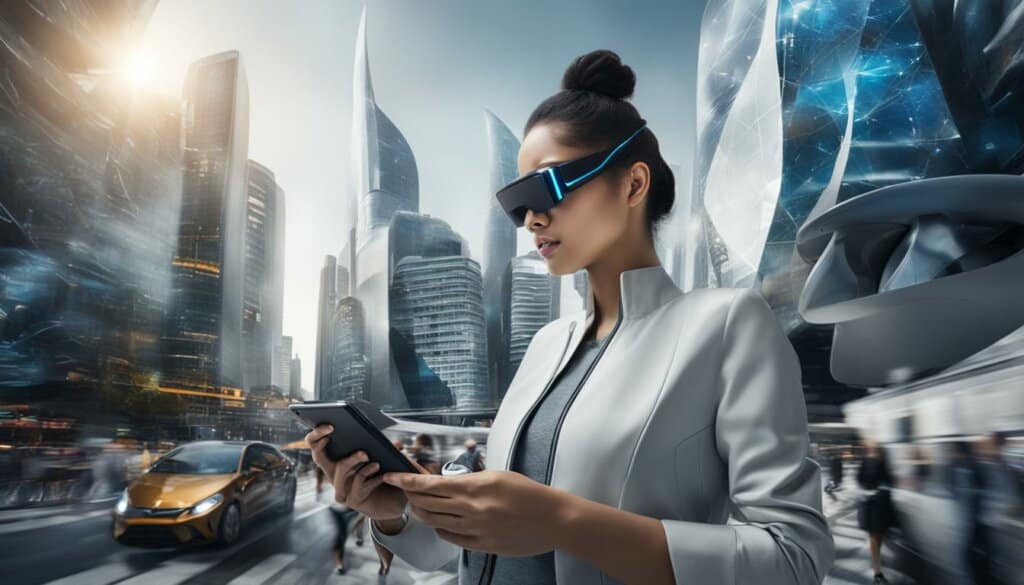
The Impact of Wearable Technology on Everyday Life
Wearable technology has seamlessly integrated into our lives, empowering us to track our fitness, stay connected, and access information on the go. These devices have become an essential part of our everyday routines, providing convenience and functionality that enhance our overall well-being. Here are some ways wearable technology has made an impact in our daily lives:
- Health and Fitness Tracking: Wearable devices such as fitness trackers and smartwatches enable us to monitor our physical activities, track our sleep patterns, and manage our overall health and fitness goals. They provide real-time feedback and motivation to help us make healthier lifestyle choices.
- Connectivity and Communication: Smartwatches and other wearable devices allow us to stay connected and receive notifications without needing to check our smartphones. We can easily view and respond to messages, calls, and social media updates directly from our wrists.
- Access to Information: Wearable devices provide easy access to information, allowing us to quickly check the weather, browse news headlines, or find directions without needing to reach for our phones or computers.
- Enhanced Workouts and Training: Wearable devices with advanced sensors and analytics capabilities help athletes and fitness enthusiasts optimize their workouts and training routines. They provide detailed insights into performance metrics such as heart rate, steps taken, distance covered, and calories burned.
- Personal Safety and Security: Some wearable devices offer features such as emergency SOS calls, location tracking, and fall detection, providing peace of mind to individuals and their loved ones.
The impact of wearable technology on everyday life goes beyond these examples, with new innovations and applications continuously emerging. As technology continues to advance, wearable devices will become even more integrated into our lives, offering enhanced functionality and personalized experiences.
Ethical Considerations in Wearable Technology
Ethical considerations are crucial in the realm of wearable technology, particularly when it comes to privacy concerns and data security. As wearable devices continue to gain popularity and collect vast amounts of personal information, it is essential to address these ethical considerations to protect user privacy and ensure responsible use of personal data.
Privacy concerns arise due to the sensitive nature of the data collected by wearable devices. From health and fitness information to location and browsing data, wearables capture a wealth of personal details. This data can be vulnerable to misuse, breaches, or unauthorized access. It is imperative for companies and individuals to implement robust data protection measures, such as encryption, secure storage, and user consent mechanisms, to safeguard personal information.
“With great data collection comes even greater responsibility.” – Anonymous
Data security is another significant ethical consideration in wearable technology. As wearables often connect to smartphones, cloud services, or other devices, they create potential entry points for hackers and cybercriminals. Ensuring the security of wearable devices involves implementing strong authentication, regular software updates, and encryption protocols to protect against data breaches and unauthorized access.
| Ethical Considerations in Wearable Technology | Actions to address ethical concerns |
|---|---|
| Privacy concerns | – Implement strong data protection measures such as encryption and secure storage – Obtain clear user consent for data collection and usage – Provide transparent privacy policies and controls |
| Data security | – Ensure strong authentication mechanisms – Regular software updates to address security vulnerabilities – Employ encryption protocols for data transmission and storage |
| Responsible data usage | – Limit data collection to what is necessary for the device’s functionality – Offer users control over their data and the ability to revoke consent – Adhere to ethical guidelines and regulations |
Responsible data usage is equally important. Wearable technology providers must ensure that data collection is limited to what is necessary for the device’s functionality and avoid excessive or unnecessary data gathering. Users should have control over their data, with the ability to review and revoke consent for data collection and sharing. Adhering to ethical guidelines and regulations, such as the General Data Protection Regulation (GDPR), helps establish a framework for responsible data usage and reinforces trust between users and wearable technology providers.
As wearable technology continues to evolve and become an integral part of our lives, addressing ethical considerations is paramount. By prioritizing privacy, data security, and responsible data usage, we can embrace the benefits of wearable technology while ensuring the protection of user information and upholding ethical standards in this rapidly advancing field.
Conclusion
The history and future of wearable device processors are filled with innovation and advancements. From the early days of bulky backpack computers to the slim and powerful smartwatches of today, wearable technology has come a long way. The future looks even more promising, with continuous advancements in technology, increasing demand, and new applications being discovered.
Wearable device processors will continue to play a crucial role in shaping the future of wearable technology, transforming industries, and enhancing our everyday lives. As we embrace the potential of wearable technology, it is important to consider the ethical implications and ensure that data security and privacy are prioritised. Wearable technology has the power to revolutionise the way we interact with technology and has the potential to improve our health, well-being, and overall quality of life.
With continuous advancements, wearable technology will become even more powerful, efficient, and compact, offering new and exciting possibilities for the future. As components such as processors, batteries, and displays improve, wearable devices will become more capable and user-friendly. Additionally, the integration of Internet of Things (IoT) and artificial intelligence (AI) will further enhance the functionality and features of wearable technology.
The future of wearable technology holds immense potential, with new innovations and applications waiting to be discovered. From healthcare to entertainment, from fashion to sports, wearable technology will continue to revolutionise industries and shape the way we live. As we embark on this exciting journey, it is essential to embrace the possibilities, address ethical considerations, and explore the limitless potential of wearable device processors.
FAQ
What is wearable computing?
Wearable computing refers to the use of technology that can be worn on the body, such as smartwatches, fitness trackers, and head-mounted displays, to provide convenient access to information and perform various tasks.
When were the first wearable computers introduced?
The first wearable computers were introduced in the 1980s, including backpack-mounted multimedia computers and toe-operated computers.
What are some popular applications of wearable technology?
Wearable technology has various applications, including health and fitness tracking, entertainment and gaming, and smart clothing integrated with sensors and technology.
What advancements can we expect in the future of wearable device processors?
In the future, wearable device processors are expected to become more advanced and capable as components like processors, batteries, and displays continue to improve. The Internet of Things (IoT) and artificial intelligence (AI) will also play a significant role in shaping the future of wearable technology.
What are the main challenges in wearable technology development?
Some of the main challenges in wearable technology development include battery life, processing power, and data privacy. Wearable devices also face limitations in terms of size, comfort, and user experience.
How has wearable technology impacted society?
Wearable technology has changed the way we interact with technology and how we live our lives. It has made technology more accessible and integrated into our everyday lives, enabling us to track our health and fitness, stay connected, and access information and entertainment on the go.
What ethical considerations are associated with wearable technology?
Ethical considerations in wearable technology include privacy concerns, data security, and the responsible use of personal data. Proper measures must be taken to protect sensitive data and respect user privacy.

